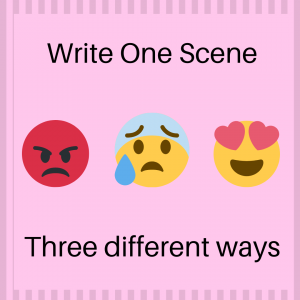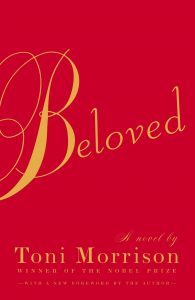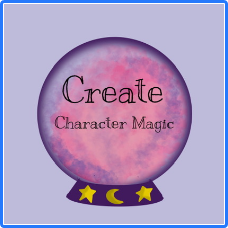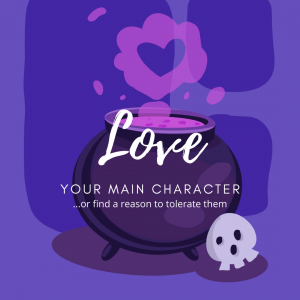Michelle Scott's Blog, page 7
March 17, 2021
Lesson 14 – Knowing Your Writing Direction is Better than Writing Blind
 The long story short: Having clear goals for your writing will help you focus on what’s really important.
The long story short: Having clear goals for your writing will help you focus on what’s really important.
The short story long: Not all writers are alike.
Sounds obvious, doesn’t it? After all, horror writers like myself write completely differently than cozy romance writers. Our audiences are different, our descriptions are different, and our stories are completely different. But what about other types of writers?
We all write for different reasons. Some writers want to make a living from writing while others write only for themselves or a small group of friends and family. In each case, the author writes for an audience (even if it is an audience of one), but the goals of each author are completely different.
My own experienceA few years ago, I found a small book with a plastic comb binding. It was definitely a personal project. Its title read, “A Hamlin Family History”, and its long genealogies related only to the members of the Hamlin family. (The fact that I found this book at a rummage sale made me rather sad.) Another time, I discovered a cheaply-printed history book in a small general store. This book told the story of a woman who lived deep in the Appalachian mountains during the Great Depression. Unlike the Hamlin family book, this one spent very little time explaining who was related to whom. Instead, it told entertaining (and oftentimes shocking) stories about life in a one-room cabin in the mountains during the 1930’s.
Both of these books were written for a specific audience and had specific purposes. The Hamlin story was only meant for members of that family. Other readers would have found it cumbersome and dull. The Appalachian book, however, had been written for a broader audience and was meant to make money as well as tell a story.
What does this mean for you?Two of the first things you should ask yourself upon starting a project is, who is going to read this and why will they read it? Maybe you want your collection of poems to remain private. In that case, you are writing for you and you don’t have to worry about a broader audience. On the other hand, if you are writing a 300k fantasy novel, you should get to know your audience, other books in your genre, and the relevant tropes before you set pen to paper.
I recommend doing your legwork up front. This will guide your story in the right direction. Keeping your audience in mind helps authors navigate their story’s journey from page one to ‘the end’.
The post Lesson 14 – Knowing Your Writing Direction is Better than Writing Blind appeared first on Writing2x.
March 4, 2021
Lesson 12 – Three Ways to Strengthen your Secondary Characters
 The Long Story Short – Avoid turning your secondary characters into caricatures.
The Long Story Short – Avoid turning your secondary characters into caricatures.
The Short Story Long – Have you ever struggled with writing tangential characters? I certainly have. Tangential characters are those who have a few lines in a chapter or two. They can be anyone from a waiter or waitress who offer a bit of comedy to an otherwise grim situation. Or they can be librarians or lore-experts who pop in to give some much-needed advice. Then there are annoying characters, like angry customers or stick-to-the-rules law enforcement who prevent your main characters from achieving their goals.
Even though these characters may only be on-stage for a short amount of time, they need to be developed. You don’t want cardboard characters, even if they are in minor roles. At the same time, you don’t want to spend hours and hours working on their backstory if they only appear for a chapter or two.
So how do you develop these characters?
I like to develop characters in the same way that artists develop a portrait: start with a sketch, add some basic color, then finish with some details.
Start with a sketch. Begin with a general idea of who this character is. What’s their age, gender, and basic appearance? What are they wearing, what does their hair look like, or what is their age? Ask yourself what would make this character stick out in a crowd.Add some basic color. By this, I mean that you should give your character some personal attributes to make them less cardboard and more human. For example, do they have a favorite expression they like to use in conversation (I’m thinking of, “Bless your heart,” or “Damn, that’s interesting”). You can also give them a habit, good or bad, such as gum chewing or knuckle cracking.Finish with some details. These details are up to you, but they’re very important especially if this character appears several times throughout the book. You don’t want your readers scratching their heads and asking, “Now, who was that again?” Details could include a small amount of background information, such as marital status. They could also come in the form of location, such as where the tangential character typically hangs out, such as a restaurant, library, or park. Emotions work well for this, too. Is your tangential character typically angry, worried, or cheerful?Overall, you need to make your tangential characters interesting enough to grab the reader’s attention. They need their own personalities and spark. Remember, they’re as important as every other part of your book, and deserve attention, too.
The post Lesson 12 – Three Ways to Strengthen your Secondary Characters appeared first on Writing2x.
February 24, 2021
Lesson 113 – Running Stuck? Set Your Direction
 The Long Story Short: If you’re struggling to write your next scene, look at the bigger picture.
The Long Story Short: If you’re struggling to write your next scene, look at the bigger picture.
The Short Story Long: For years, I was a ‘pantser’. That is, I was a writer who wrote by the seat of her pants with no plan in mind. I’d start with my characters and setting, but I didn’t know what direction the story would take. In fact, I called this the, “Playing with Barbie Dolls” style of writing since the story relied so heavily on its characters. My books were completely organic. However, my lack of vision meant I spent a lot of time staring at a blank screen, wondering what was going to happen next.
After years of struggling, I finally got smart and realized that I needed to build a framework before I started writing. I’d always had a prejudice against plotters – writers who wrote an outline from the very beginning. I believed that outlining would stifle my creativity. I suppose we’re all languishing under our own preconceived ideas of what a writer should and shouldn’t do. However, once I got over this mindset and started to outline, my writing flowed more smoothly and I was able to write faster.
Right now, when I start a new project I use Plottr. I have the app on my phone, so I can use it any time I’d like, even while waiting in line at the store. The Plottr phone app is pretty basic – mostly a note taking app with a few nice features especially for writers – but I like how I can build stories from the ground up. Having a direction isn’t as stifling as I’d worried it would be, and it’s given me the freedom to focus on developing each chapter rather than stressing on what to write next.
Here’s a snippet from my current work in progress:

Once again, I’ve started with settings but this time I know exactly how the settings are going to interact with the story. Instead of simply being background, the settings have become integral parts of the story.
The nice thing about Plottr is that you can start wherever you’d like and build from there. This means that I can also start with characters (and add their traits and personalities). From there, I can move on to actual plot points and – most importantly – an ending.
Ever since I’ve started plotting, I no longer feel like I’m writing in the dark. If you haven’t tried adding structure to your story, or if you’ve got a terrific idea but are struggling with how to write a story about it, then I highly recommend using an outline.
The post Lesson 113 – Running Stuck? Set Your Direction appeared first on Writing2x.
February 17, 2021
Exercise 18 – Change Your Scene by Changing Your Tone
 Exercise: Write the same scene in three different ways to hone your skills.
Exercise: Write the same scene in three different ways to hone your skills.
If you read Lesson 26, you’ll know how important it is to let your story’s tension build. The same goes for scenes. Start small, then ratchet up the tension. On the other hand, it’s possible to have the opposite problem: your story starts at and stays at zero tension. That’s a surefire way to make your audience lose interest. What you want to do is write enough tension to keep the readers engaged, then end with something strong.
One way to hone your skills is to write the same scene in three different ways by focusing on three different emotions: anger, fear, and romance. Obviously, the point of the scene will change as you write, but use these underlying emotions to lend dynamics to what is going on.
For example:
Here’s a simple scene: A man and a woman sit in a diner drinking coffee. I’ll be using the woman’s POV throughout.
Anger: Jill stared at her coffee mug and resisted the urge to check her watch. He was late. Again. Typical, she thought when she finally spotted Tim. He walked in leisurely, as if he hadn’t kept her waiting twenty minutes.
“I was just about to leave,” she snapped when he sat across from her.
“Am I late?” he asked, all innocence.
That comment went straight to her heart, summing up their five-year marriage. Her shouldering the burden of the relationship. Him not caring.
Jill threw a five on the table and grabbed her purse. “I can’t do this any more,” she said and left without a backwards glance.
Fear: Even though she sat in the back corner of the diner, Jill worried that someone – something – would sneak up on her. She kept her eyes fixed on the door, worried that Tim wouldn’t show. He’d promised that he’d help, but what if he didn’t. Or, worse yet, couldn’t.
Her hands trembled as she picked up her mug and sipped the coffee, long gone cold. Feeling the waitress’s eyes on her, Jill tugged her scarf more securely around her neck. What she wouldn’t give to be invisible. Please come soon, she begged Tim mentally.
When she finally saw him coming through the door, it took all her will power not to rush to meet him. Even so, she grabbed his hand when he sat across from her. “You’re finally here,” she said. For the first time in weeks, she felt safe.
Romance: For the tenth time since coming into the diner, Jill checked her makeup in the mirror she kept in her purse. Her makeup was on point, but was that a blemish on her forehead? Please don’t let Tim notice. Today had to be perfect.
She’d gotten to the diner twenty minutes early just so that she would appear calm and collected. Unfortunately, her plan didn’t quell the butterflies in her stomach. Her entire future hinged on this meeting. Yes, she and Tim had been law partners for three years, but today she planned to confess her true feelings.
When she saw him coming through the door, her heart tripped over itself. He was tall, broad shoulders, with just enough stubble on his chin to give him a devil-may-care appearance. When he slid into the booth across from her, he offered a killer smile. “Hey.”
Blood rushed to Jill’s cheeks, and for a moment she couldn’t speak. She was so lucky to have someone like him in her life. Hopefully, he felt the same way.
Now it’s your turn! Try writing a short scene with three different tones and see where it takes you. If you write something you really like, feel free to share in the comments.

The post Exercise 18 – Change Your Scene by Changing Your Tone appeared first on Writing2x.
February 9, 2021
Lesson Number 26 – Give your Story Room to Grow
 The long story short: Give your story room to grow. Don’t put the most exciting stuff first.
The long story short: Give your story room to grow. Don’t put the most exciting stuff first.
The short story long: We’ve all seen it: stories that start out great and then fall flat by the last page. The beginning might be fantastic, but the end is so disappointing.
Don’t get me wrong. Good stories thrive on energy. You don’t want a dull beginning, or your readers won’t continue on. However, starting things off with all the fire and fury in your arsenal doesn’t allow the tension to build. Your ending should always be more thrilling than anything that’s already happened in the story.
What you want to do is lead your readers along your plot by feeding them moments of intense emotion (fear, love, hate) followed by sections that move a little more slowly. Think of it as a chase. Make your readers eager to read on by linking the action scenes (battles and love making) with scenes that build the tension.
Never start out at a 10 because you’ll end up disappointing your readers at the end of your book or story. Always save something for the last page. You want to wrap up your work with a dynamic scene that will make your readers line up to buy your next book or leave that coveted 5-star review.

The post Lesson Number 26 – Give your Story Room to Grow appeared first on Writing2x.
February 5, 2021
Celebrating Black History Month and Women of Horror Month – Toni Morrison’s Beloved
 I want to celebrate Black History month by mentioning one of the most haunting books I’ve ever read: Beloved by Toni Morrison. Although I read the book back when it came out in 2004, it’s a story that has stuck with me all these years.
I want to celebrate Black History month by mentioning one of the most haunting books I’ve ever read: Beloved by Toni Morrison. Although I read the book back when it came out in 2004, it’s a story that has stuck with me all these years.
As a horror writer, I find that the genre often gets downplayed, and many people think that horror shouldn’t be taken seriously. But in Beloved, Morrison uses the framework of a ghost story to tell a wrenching tale of slavery. Yes, horror can be silly and fun. After all, I love a good slasher movie as much as anyone. However, horror – like any genre – can be used for social commentary, and Beloved is an excellent example of that.
In Beloved, the main character Sethe is literally haunted by her past. Like the ghost that plagues her, her awful memories of being a slave at Sweet Home refuse to let her go. Memories, dreams, and reality mix together to create something sinister.
When I read Beloved, I felt as if I was also being haunted by the past. Not my past, but the history of slavery in our country. I think the reason the book struck home with me is because I do relate to horror, and reading a horror novel about slavery helped connect me to the tragedy.
If you haven’t read Beloved, I highly recommend it, and if you have read it, I urge to do it again.

The post Celebrating Black History Month and Women of Horror Month – Toni Morrison’s Beloved appeared first on Writing2x.
February 3, 2021
Writing Exercise Number 86 – Take Your Character on an Outing and Make some Magic
 The Long Story Short: Bringing your character to life is more than knowing facts about them.
The Long Story Short: Bringing your character to life is more than knowing facts about them.
The Short Story Long: Have you ever read a book or watched a movie and thought about how flat the characters are? Their dialogue sounds as if it could come from anyone. They have no endearing traits. Or maybe you find yourself thinking that you could create a Sim with more personality.
The best characters are the ones who spring to life in our imaginations. They tend to have minds of their own (which is good, but frustrating, because they constantly wrestle the reins from the writer and hijack the plot). These are the characters who stick in our minds. We love reading about them in books and watching them on the screen. This is character magic.
But how do we create it?
One of my favorite authors, K.M. Weiland, writes an amazing blog about writing and story theory. She posted a great thread about character interviews. Her idea is that we should know everything about our characters, down to what they carry in their pockets. I’ve used her interview technique quite a lot and find it very useful.
However, knowing everything about your character doesn’t necessarily bring them to life. If used wrongly, the character interview can become a collection of dull facts. What you want is to breathe life into those facts and create an interesting, fully-realized person (or Klingon, or lizard person or whatever).
So how do you do that?
For me, the best way to form your character is to take them with you everywhere you go. For example, I recently took a character for a walk down by the creek. Right away, I knew that Nigel would rather have been lounging on the beach in the Mediterranean (which he could afford to do). I noticed the icicles in the trees, whereas he tugged his scarf more tightly around his neck and complained of the cold. However, when I piqued his interest in something unusual – such as deer tracks – he became less sulky. He relayed the story of how his grandmother once took him for a stroll through a pasture and pointed out the meadow larks.
I could go on and on and on, but I’m sure you get the picture.
It isn’t enough to know the facts about your characters. You also need to know their reactions and responses. That is to say, you need to know the why of how they act. What brought them to this point in their lives? Where are they headed? Answer these questions, and you will truly understand them.
For this exercise, you will: Take your character on an outing and record how they respond. If you come up with anything interesting, add it in a comment. I’d love to hear about your experience.

The post Writing Exercise Number 86 – Take Your Character on an Outing and Make some Magic appeared first on Writing2x.
January 25, 2021
Writing Lesson Number 126 – Love Your Main Character

You’re about to spend a lot of time with your main character. Make sure that they’re worth it.
The short story long:Have you ever met a character in a book or movie that you hated? Not because they’re evil (there are plenty of likeable characters who are evil. After all, Hannibal Lector, Snape, and Tony Soprano all have fans.) No, I’m talking about characters whom you can’t stand to read about or watch.
Sometimes the hated characters are too good. These characters, often referred to as Mary Sues, are always gorgeous, smarter than everyone, and beloved by every character in the book. Men want them; women want to be them. Readers, however, usually hate them.
At other times, hated characters make the worst decisions at every possible turn. For example, instead of running from danger like a sensible person, they run straight into it without a second thought. Deemed by most as ‘too stupid to live’, these characters somehow survive without ever suffering the consequences for their poor decisions.
As you probably already know, there are a slew of reasons to hate characters. Some cry or rage too much. Others refuse to communicate with anyone, even if that communication would keep a small problem from becoming a large one. Still others act superior to everyone or suffer from such a profound lack of self-esteem that the reader wants to smack them with a wet tuna…the list goes on.
Of course, not everyone will love all of your characters, but what’s important is that you the writer like them. After all, you’re about to spend a significant amount of time following them on their journey. (Not to mention all the time you’ll spend editing your story…a hard enough task without disliking your MC.)
I’m a poster child for this problem because I started writing about a character I hated. Not only did I hate Lilith Straight, I wanted everyone else to hate her too. For starters. Lilith was a Karen of immense proportions. She was rich, white, and smug. She was the one calling the manager because her latte wasn’t perfect, and she’d judge you for wearing the wrong sweater or pairing brie cheese with red wine.
Like I said, I hated her.
Why did I want to write about such a horrible person? Well, I wanted a story of redemption. One where Lilith, like Scrooge, changed her heart. However, when a writer friend of mine read the rough draft, she said no one would read past the first page since Lilith was so odious.
Thank goodness, I listened to my friend.
To help Lilith become more likeable, I started showing her true inner goodness by inserting a new character, Lilith’s niece, Ariel. Ariel was an eleven-year-old degenerate who liked to set things on fire. Ariel had a very tough upbringing, and Lilith offered the last chance for her to have a stable life. While Lilith worked hard to mentor her niece, Ariel in turn redeemed Lilith. It was a win/win situation, and it helped me to find a softer side of Lilith. Yes, she was still very snarky, but she also showed that she had a heart of gold.
Hopefully, you’re madly in love with your characters. (Although, this too can be a hazard as I’ll mention in future lessons.) Hopefully, you’d want to invite them over for wine and pizza if you could. But just in case, take a page from my book.
Let me know what you think. Have you written a character you hate (or love)? Have you read about one that you feel a kinship to, or one that you can’t stand? Drop a comment, and let me know!

The post Writing Lesson Number 126 – Love Your Main Character appeared first on Writing2x.
January 7, 2021
My Personal Reading Challenge for 2021
 Hey everyone, and happy 2021!
Hey everyone, and happy 2021!
Like many of you, January 1st always inspires me to set goals for the new year. Unfortunately, I’m ready to give up on them by February 1st. This year, however, I’m going to try something different by making my expectations more realistic.
This is especially true of my reading goals. In years past, I’ve used GoodReads to set the number of books I expected to read for the year. As expected, I fall short every year and then feel terrible about it. All this does is make reading a chore. A chore!
So this year, I’m setting a different kind of goal. Instead of measuring my reading by the number of books I’ll read, I’m going to set goals for the types of books I’ll read.
Here are my goals. In 2021, I want to read at least:
one classic
one non-fiction book
two books published in 2021
one science fiction novel (to mix things up!)
one historical fiction
I’ve also set a number of books to read, but based on my abysmal numbers from last year, I’m not going to post it. Yet. Stay tuned for June when I give you an update.
What about you guys? Any reading goals? I’d love to hear about them!
November 19, 2020
Book Review – The Girl with All the Gifts by M.R. Carey
[image error]Melanie is a very special girl. Dr Caldwell calls her “our little genius.”
Every morning, Melanie waits in her cell to be collected for class. When they come for her, Sergeant keeps his gun pointing at her while two of his people strap her into the wheelchair. She thinks they don’t like her. She jokes that she won’t bite, but they don’t laugh.
Melanie loves school. She loves learning about spelling and sums and the world outside the classroom and the children’s cells. She tells her favorite teacher all the things she’ll do when she grows up. Melanie doesn’t know why this makes Miss Justineau look sad.
Sometimes, I enjoy reading a book without knowing a single thing about it. It’s fun to let a story unfold without having any preconceived ideas. I started reading this book because of a recommendation at my local library, and I’m so glad I did. GoodReads calls this book, “a sensational thriller” and they aren’t wrong. Part post-apocalyptic novel, part zombie story, The Girl with All the Gifts is an exciting ride.
I’m not always a fan of adult books written from a child’s point of view. A child’s viewpoint is usually very limited, and I think that often stifles the story. There are exceptions to that, such as Room, but I’m just not drawn to these kinds of books as a rule. When I started reading The Girl with All the Gifts, I was concerned that I’d get bored of Melanie’s POV, but that never happened. She was both an innocent and a super brain. I also loved how badass and resourceful she was. Though she was a child, Melanie made an excellent protagonist.
The adults’ stories, too, are interesting. The story shifts from one point of view to another, but is never confusing. Each voice is unique and has a fascinating story to tell. I also like that some of the characters who come off as bad guys actually change over the course of the story. Those kinds of things make the book so much more interesting.
I’ve purposely not commented on the plot in order that you may experience it without prejudice. However, believe me when I tell you it’s a thrill ride. With zombies.



